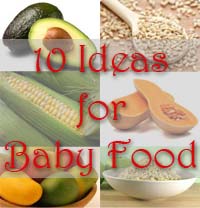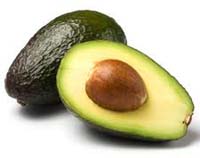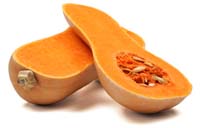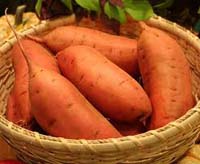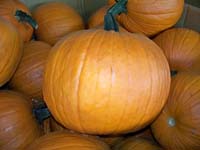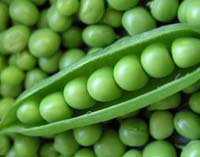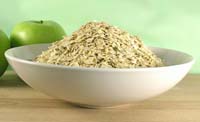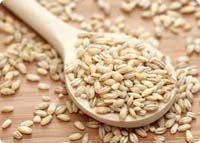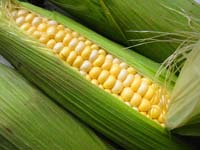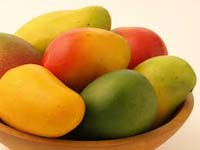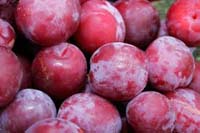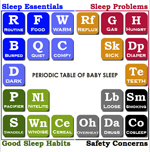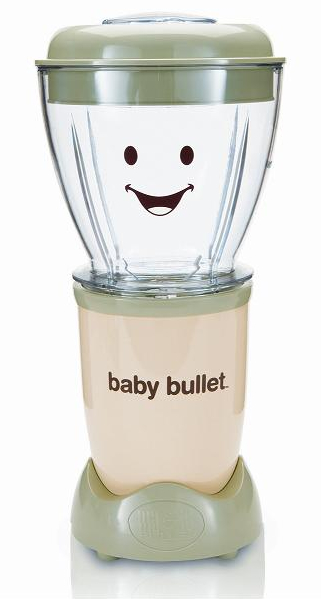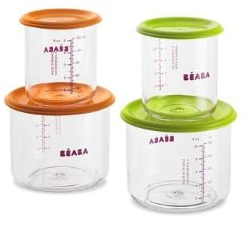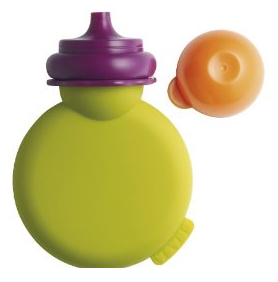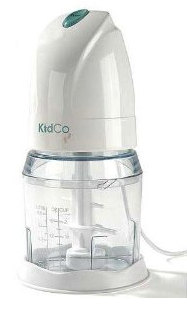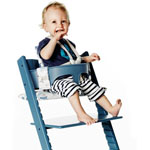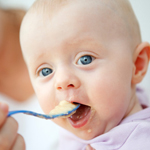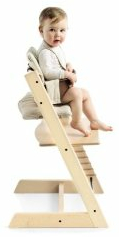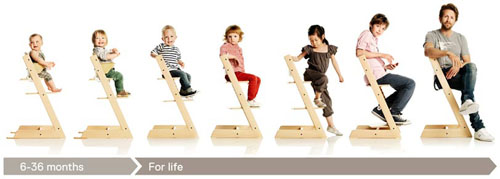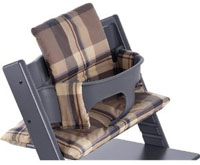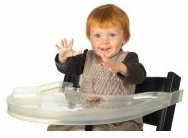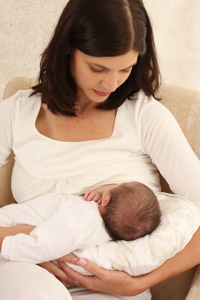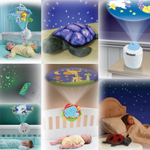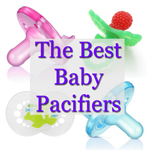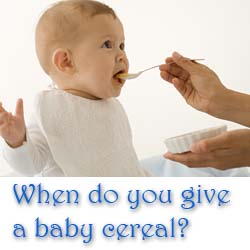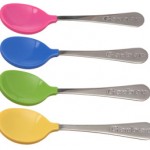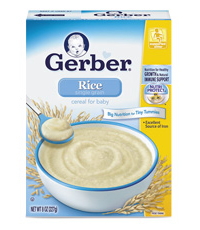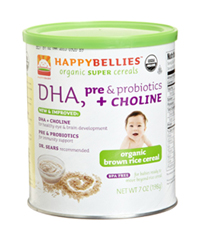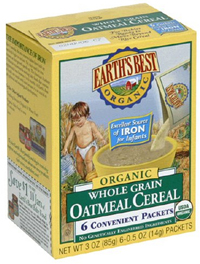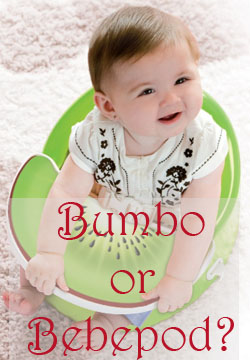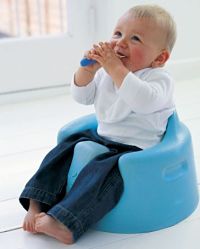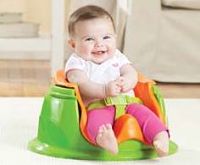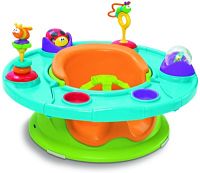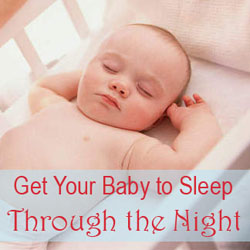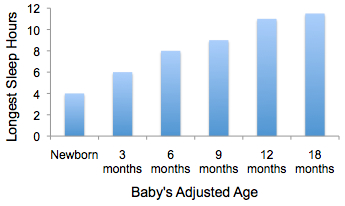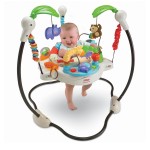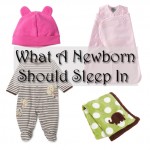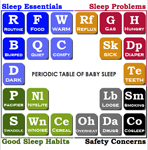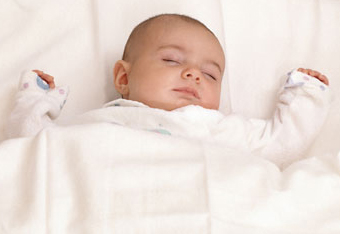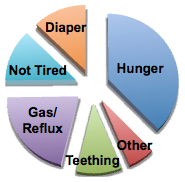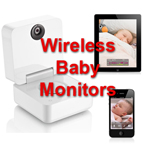 When it comes to formula and baby food, there are a lot of choices out there. You have some important decisions to make, because what you feed your baby will have a profound impact on his or her health and well-being. Thus, we’ve brought together all of the reviews you need in one place.
When it comes to formula and baby food, there are a lot of choices out there. You have some important decisions to make, because what you feed your baby will have a profound impact on his or her health and well-being. Thus, we’ve brought together all of the reviews you need in one place.
Contents:
Why Buy Baby Food Online?
Infant Formula Reviews
Baby Cereal Reviews
Solid Baby Food Reviews
Why Buy Formula and Food Online?
Many parents buy their infant formula and/or baby food in a brick-and-mortar store and are quite happy with it. It can be convenient to pick up a few things while grocery shopping, you get them home right away, and you know exactly where everything came from. That said, there are some advantages to shopping for formula and baby food online:
- Lower prices. Often you can buy in bulk online and find competitive prices. You avoid sales tax in many situations, and often you can get free shipping. All that translates to saved money, which will make a difference in the long run.
- Better selection. One of the main reasons I shop online is to get a better selection. Sure, you’ll probably find Enfamil or Similac in the store, and they’ll have what seems like a good selection of baby foods, but that pales compared to what you can find online. This is especially true if you’re after organic baby foods.
- Fast shipping. You do have to plan in advance a bit when you buy baby food online, but the shipping can be very speedy. Especially if you’re on Amazon Prime as we are — often things we order in the afternoon still arrive the next day.
- Customer reviews. Ever been in the store, and thought about buying something you’ve never tried before? There’s no way to know if it’s a crappy product or not (certainly the packaging won’t admit as much). When you buy online, you have the power of dozens, hundreds, or even thousands of customer reviews. There is no better tool to help make good buying decisions.
Infant Formula Reviews
Breast milk is the first choice for your infant’s growth and development, but if and when you choose formula, there are a lot of options out there. Here, we review some of the best options for premium, pre-mixed, gentle, and organic baby formulas.
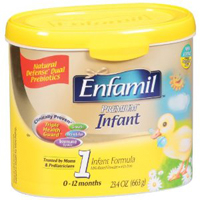 |
Enfamil Premium Infant Formula
Enfamil’s premium formula with prebiotics provides everything that your baby needs for growth and development. It’s clinically proven to improve brain and eye development, and its “triple guard” supports the immune system too.
This formula is for infants 0-12 months of age; Enfamil has other options for older babies. |
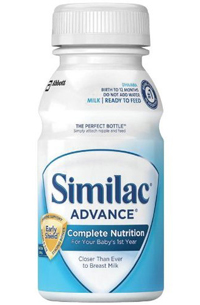 |
Similac Advance Formula with Iron, Ready to Feed
You know those feedings when your baby is screaming and you just can’t get the bottle warmed or mixed fast enough? That’s when these pre-mixed formula bottles are lifesavers! Similac Advance with EarlyShield is similar to Enfamil’s TripleGuard, with a blend of prebiotics, nucleotides and antioxidants that are found naturally in breast milk.
Perhaps most importantly, there’s no refrigeration required! Keep some in the diaper bag, in the car, in your carry-on luggage, etc. Make sure to pack clean nipples in a plastic bag. I can’t tell you how many times these have saved us by providing quick, ready-to-drink formula. |
 |
Gerber Good Start Gentle Formula
Some babies have especially sensitive tummies. To reduce spit-ups and digestive discomfort, you can switch to a “gentle” formula like Gerber Good Start. This formula starts with 100% whey proteins that are already broken down, so it’s easier to digest, and then is tailored with all of the vitamins and minerals that your baby needs.
This formula is also eligible for Amazon Subscribe-N-Save, which lets you order it on a regular basis and save 5-15%. Also, keep an eye out for the Amazon coupon which turns up now and then on the product page. |
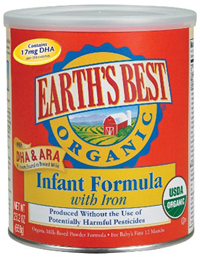 |
Earth’s Best Organic Infant Formula
The leading maker of organic baby food offers this infant formula that’s specially blended without the use of growth hormones, steroids, antibiotics, pesticides or chemical fertilizers. It’s patterned after breast milk: high quality protein, carbohydrates, vitamins, minerals and essential fatty acids (DHA & ARA).
This formula gets very good reviews on Amazon (>250 of them give it 5/5 stars). It contains no artificial colors or flavors. This is about as natural as you can get outside of breast milk! |
Baby Cereal Reviews
Next, let’s talk about cereal. This is generally the first non-liquid food that you’ll give your baby, at around the time that he or she can sit up with support. Your pediatrician may recommend single-grain rice cereal first. It’s smooth, hypo-allergenic, and inexpensive. Once your baby has mastered the single grains, however, you’ll probably want to branch out and let him experience new flavors, new tastes.
If you want to do that, especially if you want to find organic options, check out the Earth’s Best line of baby cereals. Here are two of our favorites.
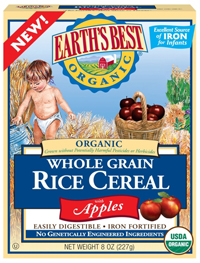 |
Earth’s Best Organic Rice Cereal with Apples
This extremely popular mix combines the whole grain organic rice cereal with apples for a naturally sweet and tasty cereal. Your baby might prefer this over plain rice cereal, because the apples give a little flavor to it.Earth’s Best organic cereals are grown without the use of pesticides, herbicides, or genetic engineering. There’s no definitive evidence that these things are harmful to humans, but the less man-made chemicals going into your baby, the better.
|
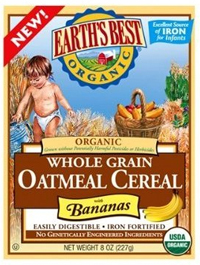 |
Earth’s Best Organic Oatmeal Cereal with Bananas
Another popular mix combines the Earth’s Best organic oatmeal whole grain cereal with bananas for a tasty mix. The banana flavor doesn’t always mix well with other baby foods, but many infants seem to like it plain. Again, these organic cereals are grown without the use of pesticides, herbicides, or genetic engineering.
|
Solid Baby Food Reviews
Last but not least, let’s review the options for solid baby food. There are a million of them. You can go to your grocery store aisle browse the Gerber or Beechnut offerings. As I mention in my guide Six Tips to Starting Solid Food, you can even buy natural applesauce and offer that to your baby.
You can even buy fruits, vegetables, and grains to make your own baby food. But if you’d like more options, to buy in bulk, or to offer organic baby foods, here are some great baby foods available from Amazon.
 |
Earth’s Best Organic 1st Fruit Starter Kit
This starter kit contains an assortment of three unadulterated fruits: bananas, apples, and pears. These single-ingredient, pureed foods are what you’ll introduce after your baby masters baby cereal. All of the ingredients are certified organic without use of pesticides or chemical fertilizers.
|
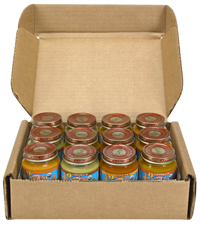 |
Earth’s Best Organic 2nd Fruit Variety Pack
When your baby is ready for 2nd foods, this variety pack offers some tasty new options. It contains three jars each of four purees: pears, peaches oatmeal banana, apples & apricots, and peaches banana raspberry. Everything’s made from the freshest certified organic materials.
|
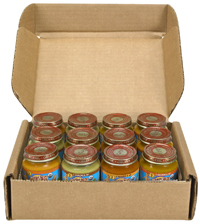 |
Earth’s Best 2nd Vegetable Variety Pack
This pack contains four vegetable varieties: carrots, sweet potatoes, winter squash, and peas with brown rice. My guess is that your baby will love the carrots and sweet potatoes most of all, as these have a sweeter taste. Start with this pack to see what your baby will and won’t eat; after that, you can order any single flavor in packs of twelve.
|
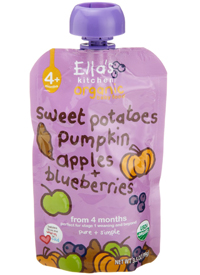 |
Ella’s Kitchen Organic Baby Food Pouches
If you’re on the go and need portable baby foods, or looking for some new flavors to try, look into the line of organic baby food pouches from Ella’s Kitchen. This pack contains twelve pouches of a single blend: sweet potatoes, pumpkin, apples, and blueberries. All very healthy foods, and gently pasteurized so no refrigeration required. You probably won’t find anything like this in your local grocery store.
Even though our little ones are a bit older, we still rely on these little fruit pouches. They’re perfect for taking in the car, to the zoo, or just to provide a healthy snack that the kids have fun eating. Just don’t show them how to blow up the empty pouch and stomp on it! |
Join Our Mailing List!
If you like this article, you might want to subscribe by e-mail or RSS so that you’re notified when new content is posted.
